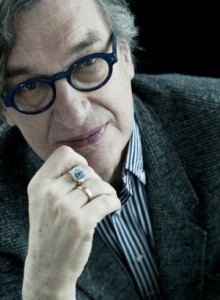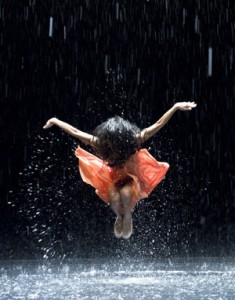Dance Poem In 3-D
Written by: FFT Webmaster | September 20th, 2011

Veteran director Wim Wenders has almost done it all. He was one of the shining lights of the German New Wave of the 1970s and has worked both in and out of Hollywood ever since. His legacy is almost as a “citizen of the world” who can find the cinematic spark in any culture where he trains his camera. His observational acumen is never more vividly on display than in PINA, his visually ravishing and emotionally involving documentary that celebrates and animates the dance/theater expressively of the German choreographer Pina Bausch. And Herr Wenders does it in 3-D, showcasing what the technology can bring to stories that are not fantasies or big budget Hollywood blow-em-up blockbusters.
 In fact, PINA, which had its world premiere at the Berlin Film Festival and will open in the United States via Sundance Selects after its screening at the New York Film Festival later this month, may go down in cinema history as the first unabashedly 3-D art film. In the film, which is not the standard historical biography but more of a wildly expressive homage with dance set pieces, Wenders offers a tender tribute to the celebrated style of the visionary founder of the Tanztheater Wuppertal, the modern dance troupe that toured the world and opened up new audiences for its modernist interpretation of the art. The film, which was to have been a collaborative effort between the two long-time friends, turned into a posthumous homage and visual poem when Bausch died of cancer in 2009.
In fact, PINA, which had its world premiere at the Berlin Film Festival and will open in the United States via Sundance Selects after its screening at the New York Film Festival later this month, may go down in cinema history as the first unabashedly 3-D art film. In the film, which is not the standard historical biography but more of a wildly expressive homage with dance set pieces, Wenders offers a tender tribute to the celebrated style of the visionary founder of the Tanztheater Wuppertal, the modern dance troupe that toured the world and opened up new audiences for its modernist interpretation of the art. The film, which was to have been a collaborative effort between the two long-time friends, turned into a posthumous homage and visual poem when Bausch died of cancer in 2009.
 Much like Bausch, Wenders is an ever-curious artist who approaches filmmaking as an ongoing experiment. His swirling camera angles and visual layering captures Bausch’s oeuvre with grace and acumen, mirroring its modernity in a striking (and as yet untried) use of the subtle edges of the 3-D format. He favors the stylistic device of making foreground figures stand out sharply from a deep background, giving the film a modern, painterly look. While the on-camera interviews and reminisces are emotionally resonant, the high points of the film are undoubtedly the newly filmed dance sequences which feature the striking virtuosity of her multi-national ensemble. For Bausch, dance is a language. For Wenders, film visuals are also a language. In fact, they are both languages that exist and resonate without words. In many ways, this is the most striking marriage of the two art forms ever committed to celluloid (or digital video, in fact). It is a must for dance freaks but also has much to offer to discerning audiences who are interested in how new technologies influence and perhaps enhance the visual experience.
Much like Bausch, Wenders is an ever-curious artist who approaches filmmaking as an ongoing experiment. His swirling camera angles and visual layering captures Bausch’s oeuvre with grace and acumen, mirroring its modernity in a striking (and as yet untried) use of the subtle edges of the 3-D format. He favors the stylistic device of making foreground figures stand out sharply from a deep background, giving the film a modern, painterly look. While the on-camera interviews and reminisces are emotionally resonant, the high points of the film are undoubtedly the newly filmed dance sequences which feature the striking virtuosity of her multi-national ensemble. For Bausch, dance is a language. For Wenders, film visuals are also a language. In fact, they are both languages that exist and resonate without words. In many ways, this is the most striking marriage of the two art forms ever committed to celluloid (or digital video, in fact). It is a must for dance freaks but also has much to offer to discerning audiences who are interested in how new technologies influence and perhaps enhance the visual experience.


